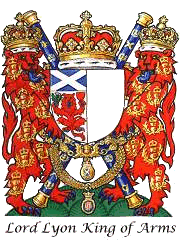
The name of MacArthur has been popular on both sides of Loch Tay for many, many centuries. Indeed, the oldest known line of male MacArthur decent is from Patrick McArtair born in Killin around 1615. His descendants (my ancestors) were born (or registered) in Kenmore and on Loch Tay farms such as Balnasuim (1694) and Calilachan (1789). My father, Francis McArthur, was born in Crieff, Perthshire in 1924.

Just to the north east of Killin at the west end of Loch Tay, a remnant of ancient land division named Tir Artair (The Land of Arthur) borders the northern shore of the loch. The site is marked on Joan Blaeu’s Atlas of Scotland dated 1654 but the name is thought to predate the 1400s and may be truly ancient. This just one of the plethora of “Arthur” place names to be found scattered across Scotland and the question has to be asked if Tir Artair could be related to the 6th century “Arthur of the Round Table” whom the MacArthurs claim descent from?
The name of Dewar is nearly as old as that of MacArthur and dates from the 8th century. The story goes that in 717, Irish Princess Saint Kentigerna fled to Scotland with her son Saint Fillan (Little Wolf) and her warrior brother, Irish Prince Saint Comgan (who is buried on Iona) along with many of their siblings. The family originally landed in Loch Duich near Skye (where Comgan built a monastery) but then they moved south. Saint Kentigerna is reputed to have founded a nunnery on Inch Cailloch in Loch Lomond, which just happens to be the home of, and the geophysical representation of, The Lady of the Lake from Arthurian lore. No nunnery has ever been found, but Inchcailloch shares ancient, female, religious associations with Priory Island (The Island of Women) on Loch Tay.
Kentigerna’s son, Fillan appears to have wandered extensively with dedications in Renfrewshire, a village named Saint Fillans at the east end of Loch Earn, and a monastery in Strathfillan, Perthshire. He settled in Pittenweem, Fife before retiring to Glen Dochart at the west end of Loch Tay. Saint Fillan died in 777 and his relics were given into the safe keeping of the Dewars (Gaelic: Deoir). In ancient times, the Deoirs were not just warrior guardians of the relics, but they were also obliged to transport the objects across the landscape to where and when the magical properties were most needed.
There were five Dewars appointed to guard and serve these relics :
The Mayne was one of Fillan’s arm bones enclosed in a silver reliquary casket. Legend has it that Robert the Bruce requested that the bone be brought to the Battle of Bannockburn in 1314 by the then Deoir, the Abbot of Inchaffray Abbey, he obliged.

The Quigrich, Fillan’s crosier, was long in the keeping of a family of Deoirs. It was recorded in their custody in 1428 and their right of guardianship was formally recognised by King James III in 1487. The silver gilt head of the Quigrich was passed down the family and travelled to Canada for a few generations but it is now in the ownership of the Museum of Scotland, Edinburgh.
The Bernane was Fillan’s cast bronze bell, which is also now kept at the Museum of Scotland. It was long kept by the Deoirs at various family farms in Glen Dochart and it was used for the coronation of King James IV on 24th June 1488.
The Meser was Fillan’s mass cup of which there is no record and the Fergy is an unknown object.
Although Clan Dewar are now recognised by the Lord Lyon and have their own Chief, Michael Kenneth O’Malley Dewar of that Ilk and Vogrie, the name Dewar is also listed as a sept of Clan Arthur (as well as Menzies and MacNab who were also prevalent in the Loch Tay area). If the Dewars are related to the MacArthurs this would suggest that there was a concept of a tribe of Arthur in the Loch Tay area as early as the 8th century, much predating Patrick McArtair of 1615 and also predating the MacArthur Chiefship in Loch Awe of 1308. It is possible that the Loch Tay branch of Clan Arthur is even older than the Chiefship of Loch Awe.
It is not known how, or even if, the Loch Tay branch of Clan Arthur connects to the Chiefship at Loch Awe, although the geographical connection via Glen Dochart and Tyndrum is obvious. If we take a look at names from the Loch Tay family tree, we can note that the first son names of Patrick and John were popular, with Duncan and Donald popular for second sons. Highland families followed a strict naming convention and the names of Patrick, John and Duncan were also popular in the Loch Awe family suggesting a strong family connection.
We should also note that there is a prominent branch of MacArthurs on the island of Islay to the west of Loch Awe and here we also find the MacIndeors of Islay whose name is directly related to the Deoirs or Dewars. If the families of Loch Tay are connected with Islay, it would make sense that the connection would be through Loch Awe. My father was once sent to work on a MacArthur farm on Islay in his teens, and he thought that there was a distant family connection with Perthshire. More research is required to fit the broken branches of Clan Arthur and the Dewars back together.
Today the Dewars are better known for their family whiskey distillery at Aberfeldy and with a dram in our glass, we can toast the relics of Clan Arthur and our Dewars, the great guardians of history.
Hugh DP McArthur FSA Scot
Clan Arthur Seannachie
© July 2021
The Dewar Manuscripts are a collection of oral folktales from the Scottish Highlands recorded in writing by John Dewar between 1863-1871.

